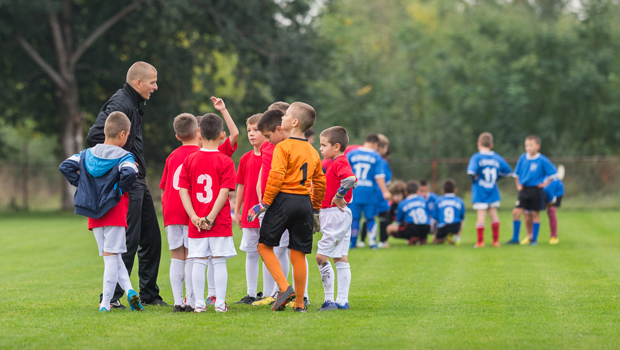Summit Kick-Starts Global Positive Education Transformation
Educators, administrators, students and anyone concerned about the inclusion of character and well-being principles in schools traveled from all around the globe to attend The World Positive Education Accelerator (WPEA): Second Festival of Positive Education + Appreciative Inquiry Summit last month in Fort Worth, Texas.
Held in the Fort Worth Convention Center, more than 30 countries were represented with roughly 900 like-minded individuals dedicated to integrating more positive education in global educational systems.
This conference’s unique approach went beyond topics of learning and achievement in math, science, social studies and language, sharing the latest in research on curricula that boost student well-being, resilience and “grit.” This focus aids the development of individuals who reach their full potential of learning and leading through a positive mindset and critical problem-solving.
With a growing number of children struggling today to cope with challenges at school and at home—ranging from technology distractions and innovations to increasing teen depression, bullying and school violence—the need is urgent, participants say.
“Essentially we’re redesigning what 21st century global education looks like,” says Sir Anthony Seldon, president of the International Positive Education Network (IPEN), a co-convener of the four-day conference with the David L. Cooperrider Center for Appreciative Inquiry at Champlain College. “We want educators to walk away empowered with the tools, resources and connections to make real, lasting change.”
Advocates for positive education, including Lea Waters, Ph.D., a psychology researcher at the University of Melbourne in Australia, say that when we focus on our children’s strengths and have the right tools to teach character, we can see grades, life satisfaction, self-confidence and positive emotions improve. This gives our children the best chance to cope with the struggles that life may bring.
One of things that has got to be in our close future is the creation of inexpensive ways of reliably and validly training many teachers who want to deliver positive education,”-Martin Seligman, Ph.D.
Using David Cooperrider’s Appreciative Inquiry method (a whole-system approach to problem-solving), attendees had the opportunity to look for solutions from all angles, including strengths-based parenting, positive psychology practices, faculty and staff training, and lifting up surrounding institutions and communities.
“We have this opportunity to create the best educational systems in the world,” David told the eager crowd. “My heart aches for where it is not happening.”
Attendee Margarita Tarragona, Ph.D., a psychologist, coach, organizational consultant and author from Mexico, found the conference empowering.
“I came for two reasons. I love positive psychology and am very involved in the movement, and I wanted to experience the full Appreciative Inquiry process for the first time,” she says. “It’s so interesting to me to observe the process that can bring so many people together and turn that energy and brain power into something concrete to create real change.
“It was particularly moving to hear David Cooperrider say that of all the projects he’s involved in, he believes this is the most important and the most critical to our global future. What a wonderful inspiration to be a part of that,” she says.
Keynote speakers included positive psychology powerhouses such as Martin Seligman, Angela Duckworth, Lea and Anthony. David led the summit portion of the conference with Lindsey Godwin, director of the Cooperrider Center for Appreciative Inquiry at Champlain College.
Attendees from Texas, California, Vermont, United Arab Emirates, Singapore, China, Mexico, Australia and beyond broke into smaller groups according to their strengths and interests to address summit topics such as teacher enrichment and training; what the future of learning will look like for all levels from early education to higher education; new science and research opportunities; national and international policy; and business as a force for positive education.
Martin, a founding father of positive psychology, explained to the crowd that teaching character and well-being in schools can buffer against negativity, anger, anxiety and depression. He notes that more accountability and training is needed to help it take hold.
“One of things that has got to be in our close future is the creation of inexpensive ways of reliably and validly training many teachers who want to deliver positive education,” he says.
Lisa Sansom, an organizational development specialist from Ontario, Canada, shares the desire for more teacher training at all levels.
“I would really like to see this flourish and grow and really come to life,” she says.
She believes more leaders in the right positions need to make the right decisions. “The one thing we really need is a leadership champion. Someone who is positioned high enough to be able to say, ‘yes this is it, and start making it happen,’ kind of the way Anthony Seldon has in the U.K. ... We need someone to say, ‘this is great, let’s go.’”
The global turnout and interest in positive education was encouraging to Lewis Forrest II, associate dean for university life at George Mason University. He believes there would be more interest in well-being and character in schools if more educators had access to the information.
“I’ve gotten a few responses on social media from folks who asked, ‘Where are you, what are you doing?’” he says. “These are really excellent dedicated teachers and educators who just don’t know.”
As educators and administrators start to see results, there will be more of a positive response, he says. “With anything that you learn, the critical piece is how you share it, explain it to folks and coach them on what is useful.”
For more information or to get involved, go to IPEN and David Cooperrider Center for Appreciative Inquiry at Champlain College.
Read More









